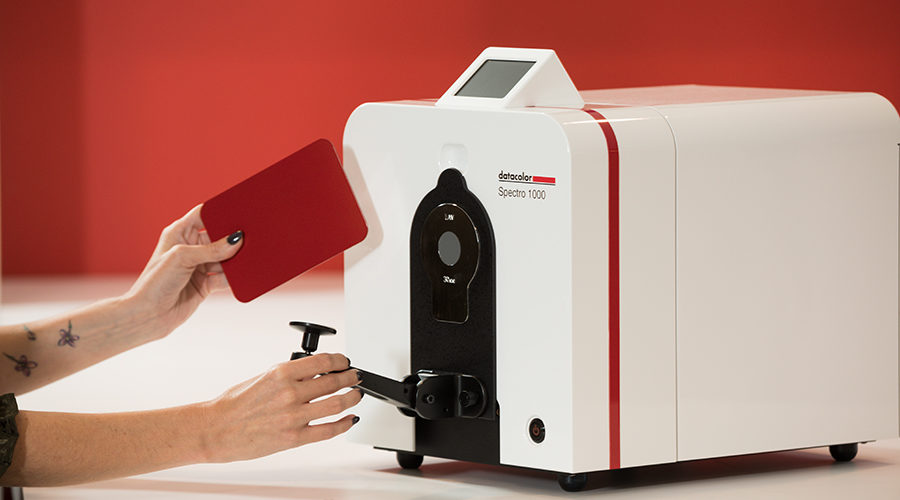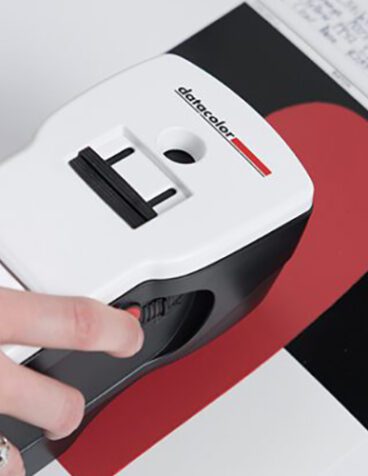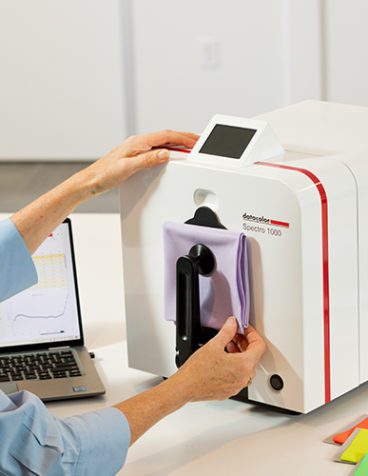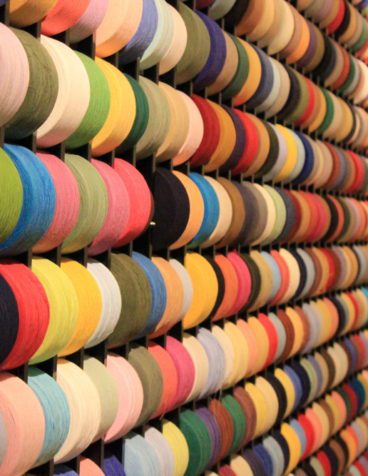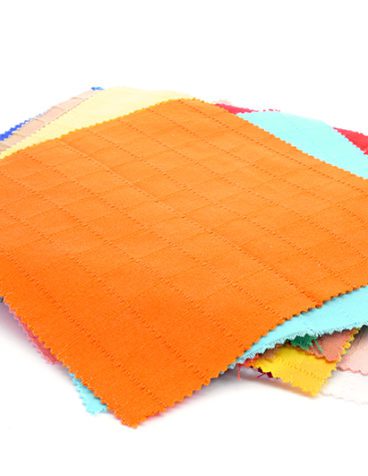Article by
Ken Butts
This is the fourth post in our Keys to Digital Color Communication series. Ken’s previous posts on the topic include “Sample Conditioning for Digital Color Communication,” “Keys to Reliable Color Communication” and “Sample Measurement Technique in Digital Color Communication”.
When it comes to digital color communication, one of the most important components for accurate capture of spectral data is the color measuring instrument, or spectrophotometer. Because the spectral data for a standard will serve as the reference data for everyone involved in the design and development process, it is critical that the data truly represent the standard. Accurate capture of spectral data is possible when the instrument used is reliable and repeatable, not only to itself but also to other instruments of similar design. Regular evaluation and maintenance are critical, however, as a spectrophotometer is a precision scientific instrument and must be maintained as such in order to guarantee repeatability for the long-term.
In addition to regular evaluation and maintenance, instrument correlation may also be used to improve upon inter-instrument agreement. Instrument correlation allows for the adjustment of spectral data to account for instrument drift due to environmental conditions and use of the instrument. Instrument correlation does not take the place of regular maintenance, but it can provide assurance that the instrument is performing as well after months of use as it was when it was first installed. This is accomplished by measuring a set of target standards on a master instrument and then remeasuring those standards on the test instrument. Any variations in the measurements are accounted for by the calculation of correlation factors. These factors are then applied to the output of the spectrophotometer when any sample is measured, effectively returning the spectrophotometer to its original factory specifications. Prior to calculation of these correlation factors, diagnostics must be performed to ensure that the instrument is functioning properly. Instrument correlation has the benefit of bringing all instruments in the supply chain closer together as their agreement with the master instrument is improved.
Figure 1 shows the results of such a correlation procedure, indicating the variance of the spectrophotometer relative to the master instrument both before and after the correlation procedure. Prior to correlation, the maximum color difference for any correlation sample (ceramic BCRA tile) was CIEL*a*b* DE 0.243, with an average for all twelve correlation samples of 0.184, indicating a slight drift beyond the original factory specifications of 0.15 maximum and 0.10 average CIEL*a*b* DE. After correlation, the maximum color differences for any sample is 0.225 with the average being reduced to 0.081. Additional improvement in correlation may only be possible through instrument service. Note also that improvement in correlation on tiles is no guarantee of improvement on all colors across a range of textile materials typical for retail/apparel products.
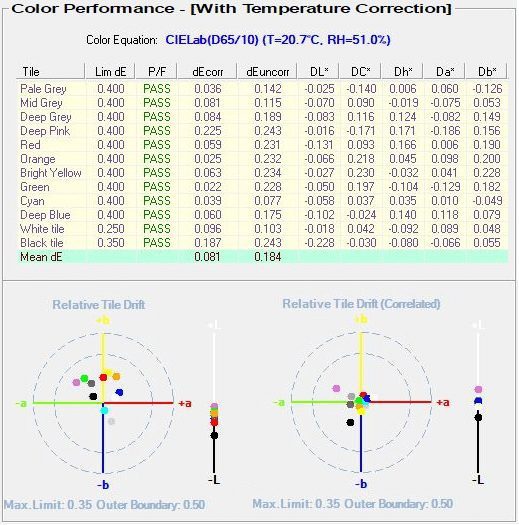
Figure 1. Spectrophotometer Correlation Results
While adjustment of digital color data through instrument correlation can serve to improve upon the output of a spectrophotometer, variation in digital data due to instrument drift is only a small portion – and often the smallest – of the potential difference in sample measurement throughout the supply chain.
Connect with an Expert
